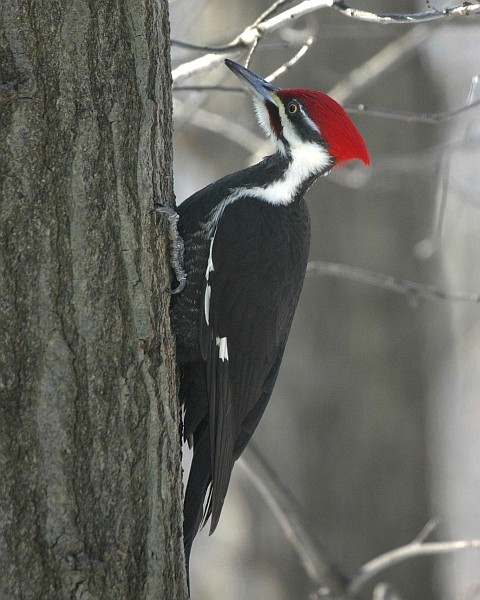
In his Sand County Almanac, Aldo Leopold called November “the month for the axe. …In winter, when we are harvesting diseased or dead trees for our fuel wood, the ring of the axe is dinner gong for the chickadee tribe… Every slab of dead bark is, to them, a treasury of eggs, larvae, and cocoons.”
Dead trees are treasure troves for woodpeckers too, and in the bird world they wield the ax. Though the leaves have fallen the weather is still warm, the larvae are still active inside the bark, and the woodpeckers can hear them.
This weekend I found a pileated woodpecker excavating a dead tree in Schenley Park. Among birds, the pileated’s beak is about as close as you can come to an ax. The bird itself is the size of a crow with a beak 1.5 to 2 inches long. That may sound small but his beak hits the wood at 13-15 miles per hour so the woodpecker experiences 10G’s of force at each blow.
It would kill you or me to slam our heads against trees but the woodpecker’s head is designed for the work. His neck absorbs the impact and his brain is cushioned by a network of flexible cartilage and spongy air-filled bone. His tongue is very long for probing the openings he creates — so long that it retracts inside to the back of his skull. It’s the right equipment for chopping trees.
Keep a lookout this month for pileated woodpeckers. November is the month for the ax.
(photo by Dick Martin)